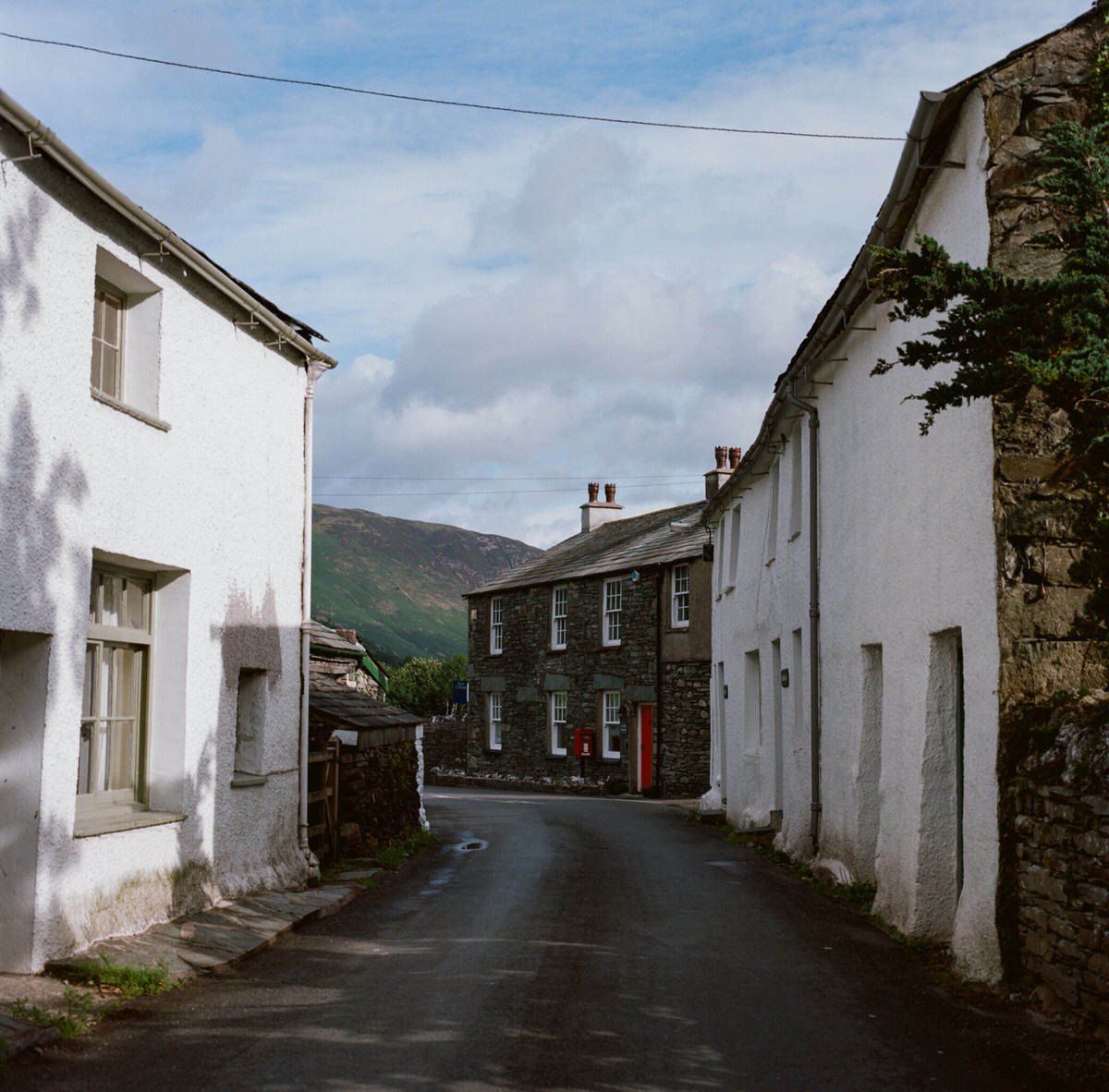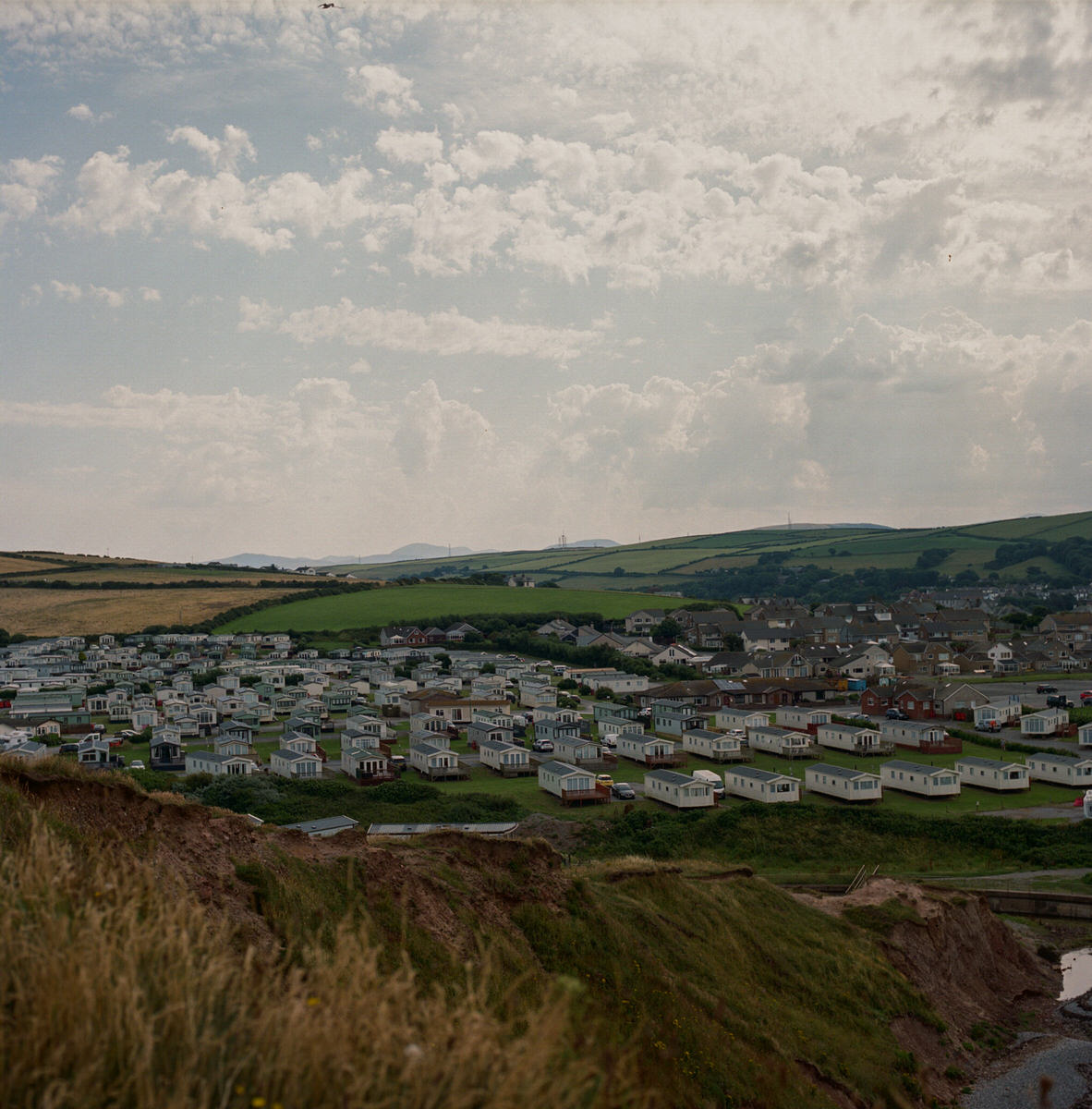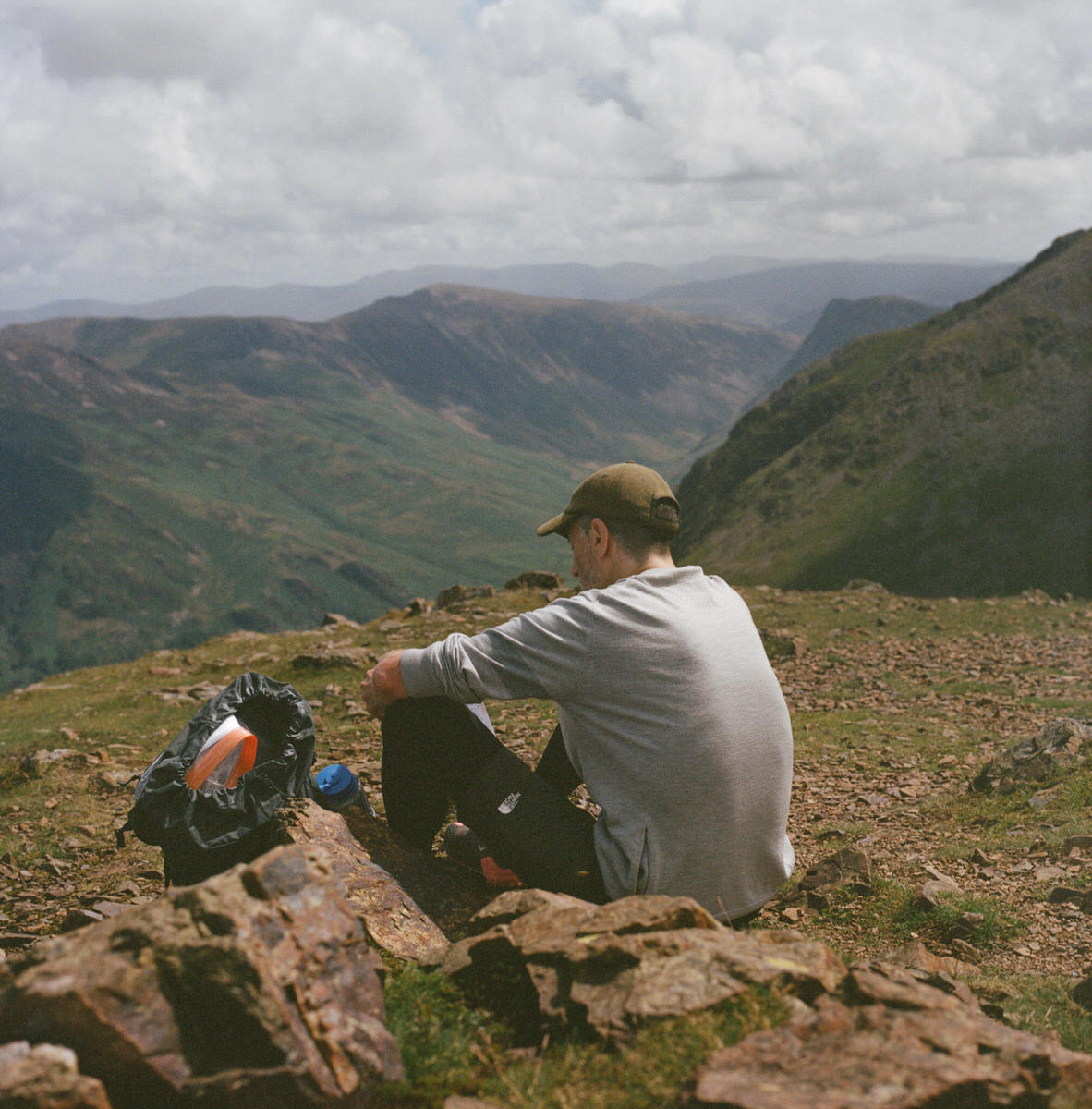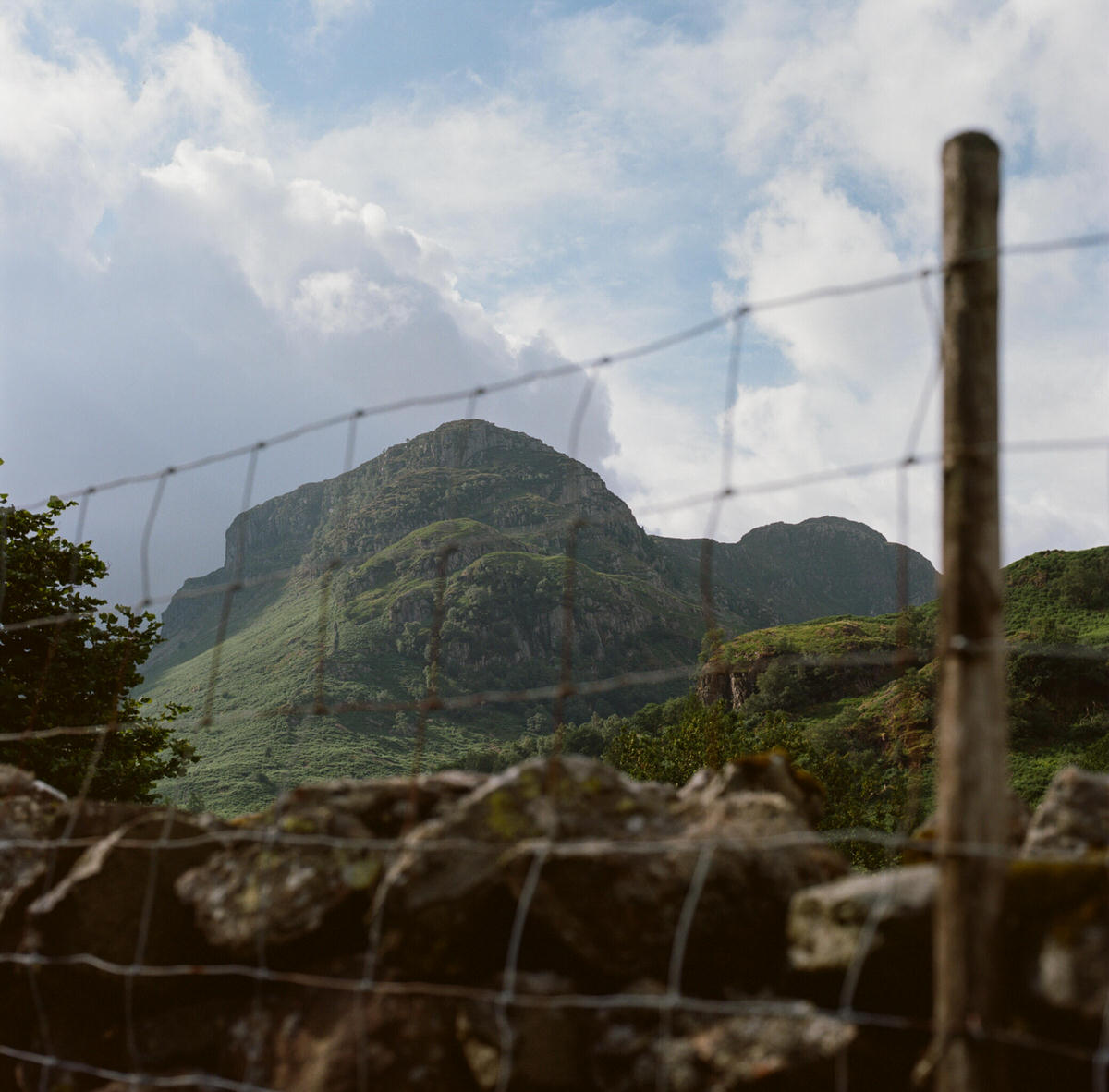
I ate a cheese sandwich. I ate a cheese sandwich with Branston Pickle. I got crisps. I put the crisps in the sandwich. I ate a cheddar cheese sandwich with Branston Pickle and salt and vinegar crisps on brown bread while looking out over Lakeland. I got more daring with my sandwich orders. To the consternation and confusion of various surly-yet-kind proprietresses, I ordered Madness: brown bread tuna no mayo, French mustard, cheddar cheese, Branston Pickle. That knocked ‘em back on their heels. Alright, love, they said. Within that “love” lived a universe of judgement. But I am not British, and so that judgement rolls off me like water on a duck. I am not of you people. I know not of your ways. I know not of your willy-nilly pluralizations and singulars. Back home I use a scale. I employ math. I thought I was ordering Pickles. I thought I was walking through the Lakes District. I thought wrong. I know only of my avant-garde tuna-no-mayo ways. I put crisps on that sucker, my beautiful bastard sandwich. I was a maniac. I was a maverick of the sandwich in these parts. Wordsworth’s (or is it Wordworths’?) ghost loomed. I cooed in abject ecstasy while seated at Innominate Tarn (THAT NAME), the ash-scattering-spot of subtle anarchist and bohemian walker Alfred Wainwright (not Wainsright, tsk tsk). I was walking, and you bet your bottom dollar I was eating sandwiches.
I have to admit, I am a full convert. I never want to walk again without a sandwich. It is a perfect walk companion. It is an ideal lunch. It is simple, clean, requires no special tools to consume. Its provenance as gambler grub makes sense — single handed deliciousness, the other hand for throwing dice. I’ve walked Japan for so long that I’ve become used to the complexities of fish lunches with fish liquids sloshing about and various vegetables and big rice balls with not much filling and cold hard rice. Sitting down to eat along the Kumano Kodō can feel like preparing for minor surgery. I had one bento spill into my pack and for the next year (despite so much scrubbing and baking soda) it smelled like a rotten sock. Comparatively, superficially, the sandwich is regressive, sure, like going back to the middle-ages in terms of culinary refinement, but in practice it’s a svelte and efficient companion. You pull it out, unwrap it, fill it with crisps (difficult in high winds, I must note), and consume it without needless dexterity. The sandwich moves readily and easily from hand to mouth. Nothing to balance. No manipulation of hashi. You can eye the cattle eyeing you back as your mouth and brain and body are delighted by the fabulous crunch and sweetness of a Branston Pickle, salty crisps, that sharp smack of Lincolnshire Poacher cheddar.

I didn’t know what my buddy Peter had gotten me into. He had some time off. The Wainwright Coast to Coast walk — a walk cobbled together around 1973 by fusing a mix of rights-of-way paths and hiking routes, put forth in a lovingly and precisely described hand-written book of weird facts (“place your coat over barbed wire fences so you don’t rip open a testicle” (???)) — up in northern England, was a walk that had moved my friend, had “changed his life” when he was 15. And he wanted to do it again, and do it with me. I was honored! Who was I to say no?
Technically, I said yes. But the total crushingness of my schedule these past three months kept me from psychically acknowledging that the walk approached. I finished the BBJ Jazz Tour and had about a day to pack before hopping on a 14-hour flight, landing, sleeping, and driving eight hours to the start of the walk. Talk about bodily abuse. I never felt so bashed. It wasn’t until we were at St. Bees that I began to process what lay ahead: some 300km of walking. Sheep. And lots of sandwiches.

I was impressed. Here is a smattering of what was so impressive:
- The great peaks and valleys of Lakeland, a place more of Scotland (so I’m told, minus the midges), perhaps, than England, and therefore curious in the context of British Rolling Greenery. Lakeland itself, too, is green, so green. But also violent in its many peaks. On day two we ascended some 1,200 meters, rapidly, while covering 28 kilometers, all while my soul was still over the Pacific, and my body had yet to come even slightly close to aligning with British Summer Time. It was like doing a nine-hour Billy’s Bootcamp workout that started at 2 am. I was destroyed. In awe of the beauty, yes yes, but also feeling a bit shell-shocked and not quite sure I was getting what I signed up for (though, knowing what I signed up for would have required me to, uh, read about the walk). So — WHOOOOSH — right in it, right up the big peaks of Red Pike and High Stile and Haystacks as British fighter jets whizzed by skirting the valleys like a Top Gun scene. Upon those peaks sandwiches were had and for them — amidst the trauma of the jet-lagged elevation gains — a new love was born.
- The general walkability of England. It truly is special — this right-of-wayness (yes, yes, the rights of way). Walk and walk and walk and string a bunch of routes together and slap a name of it — the So-and-So Way — and there you have it, a new Way. It seem as if this is how they are made.
- The endless sheep, the young men barking orders to their dogs to wrangle the sheep. The sheep bulldozing the middle of the route, frothing over the hills like rolling fog. The sheep peering at you suspiciously with their grazing-animal horizontally-slanted pupils. The cute Herdwicks of Lakeland and the strange pig-headed sheep elsewhere of Dr. Moreau horrors.
- Ella the dog. A dog we met halfway through the walk, at a B&B in Keld. Reader, I kid you not when I say I was brought to tears by the joy and unbridled love of this creature. No hosanna exists that could possibly do justice to the trueness of Ella. Ella burst into our room in the morning (much to the traumatism of the owners) and I’ll take an Ella GOODMORNINGGOODMORNINGGOODMORNING any damn day of the year.
- The thousands (tens of thousands?) of miles of dry-stone walls. Walls and walls chopping up the hillside into pleasing geometries.
- The variance of landscape — from the grandeur of Lakeland to the plateau walking of the North York Moors, to the bogs and Nine Standards Rigg (again: NAMES) of the Yorkshire Dales. I was told — warned! sternly! — that the walk devolved into banal blandness after Lakeland but, no, it did not! It continued on in daily permutations with strange delights and tessellated fields and abandoned Roman lead mines and mysterious Stone Circles and cattle that were a bit too curious (the herd surrounding me like 400lb actors in a West Side Story alley knife fight) and green-upon-green valleys all lit by that ever-changing light, sometimes misted in the distance, coating the landscape in a haze-filter, sometimes spotlit as the sun broke through the endlessly-churning cloudy skies.
- Eating tiny, sour, British apple day after day.

And the people were never-not entertaining, even if they didn’t always make sense to me. There was Jill, sweet Jill, who had a secret cupboard filled with all the cereals on this fine earth of ours. And the man with the coke-bottle-thick glasses being walked by his dog. Alan the domino-playing flibbertigibbet. The septuagenarian runner with skin so weathered that he looked as if he could be hit with a shotgun blast and keep going; my walking buddy was a mile ahead of me and he told me as much. There was Ariana, the Extremely American Woman, who could be heard issuing the most buoyant of good mornings!! this side of the Atlantic (even if maybe none of us were quite ready for them, they were appreciated). The two Australian women putting on sunscreen in a rainstorm. And the British woman doing the whole thing solo, with her pup, who asked us (as men) to give some treats to her dog since it was getting a little too defensive against Y-chromosomes on the trail. And of course the many high-school students doing Duke of Edinburgh’s Award hikes, often with looks of total dejection and sadness, and certainly with much stink, but always with an impressive commitment.
Overall, it was far less crowded than expected. Each day we saw hardly any other walkers. It felt like the route was nearly ours alone.

We did it in 13 days. That’s probably too short. We had no rest days, and some big ones (35km?). My buddy hurt his ankle and a baked-in rest day would have been helpful. I made it in one piece, but had a couple “OMG I can’t believe we’re walking today” moments in the middle. Heavy legs, tired brain, that sort of thing. I managed to avoid injury and even avoid blisters thanks to my 1000s-of-kilometers of walking on concrete and knowing just how / where to preemptively tape up my feet. Daily, I was grateful for my “compression tights” which are sort of like walking with a superpower.
Most everyone else was doing the walk in 15 or 16 or 17 or 18 days. Much more sensible. If you have the time, it’s definitely the length to focus on. Take it slow in Lakeland (on many days there’re alternative routes, and you could do loops to different peaks depending on weather for two or three days if you wanted), for the delights of Lakeland are many (I prefer the less-clumsy “Lakeland” to “The Lake District”).
As for equipment, I was grateful for walking poles, if only to get in an upper body workout, but also for the often gnarly descents, which sometimes came fast and were all sharded granite.
We massively over packed. I wore basically the same clothes every day:
- Merino wool t-shirt (Icebreaker)
- Merino-wool sweater (Icebreaker)
- Gore-tex rain shell (Arc’teryx)
- Compression tights (Mont Bell)
- Trail running shorts (Mont Bell)
- Merino-wool thin socks (Icebreaker)
- Gore-tex trail-running shoes (News Balance)
- Goofy hat that makes me look like Gandalf (but is amazing in the rain) (Tilly)
- Knit wool cap (United Arrows)
It did get down to near-freezing a couple times. We got sleeted on, soaked to the bone. But mostly the weather was — if always mercurial, always threatening — largely pleasant. Ever-changing, but we were mostly lucky with the rain. We both also had ultra light down jackets (Arc’teryx) which were nice for warming up atop peaks.
A few inns offered washing. Otherwise, we just wrung stuff out in the sink. (You do need to do a “real” washing once a week or so; there’s some stink that the sink alone can’t kill.)
All in all, logistically simple, great infrastructure, hot showers, clean beds, mostly-nice (but sometimes truculent Deliverance-vibes) folks. Terrible pub food (this is the toughest part of the walk — the pub food upon pub food violence your body is subjected to), but no surprises there. And consistently undrinkable coffee (I brought my own little pour over packets and made a thermos of fancy-coffee each morning to assuage my fusspot needs). But topographically varied and lush and gorgeous and if you’re into this kind of walking (nature, few bugs, cows, sheep, ground-nesting birds, well-defined routes, village-to-village-inn sleeping or camping), it seems like as fine a walk as any to undertake.

I hauled around my old Hasselblad that had lay dormant since I was at university studying photography, doing studio work. I didn’t even really know if it was working, or if the app I was using for metering was working. But it was! Shockingly, most of the photos turned out … well? Everything in this post is from the Hassy. It was a sort of masochistic, hilarious object to haul around Lakeland — it’s heavier than any other camera I own. But a nice conversation starter, and it was nice to pull it out for special shots.
The camera / lens shutter maxes out at 1/500s; i.e., not very fast. Despite the bright daylight, I got some lovely depth of field out of my 80mm f/2.8 Zeiss lens by slapping on a 16-stop ND filter (which, yes, makes focusing pretty tough because the image is so dark!).
Otherwise, I photographed with my iPhone 14 Pro using Halide in Apple “Pro Raw” format. Edited in the Darkroom app. Delighted by the amount of detail and “push-pull” available in Pro Raw. If you have a Pro iPhone and aren’t shooting in Raw, you’re missing out, me thinks.

I went for a 300km walk and it was a blast and the conversations with Peter were fabulous and Ella the dog an angel. I realize many Brits are sort of mortified by their own country (as many readily admitted to me), and I get it (hey, I’m technically American), but most (all?) first-world countries today are well-beyond the lily-white. I don’t know what I’m doing. The world burns and I try not to throw out the walking babies with all the frustrating, seemingly-intractable political bathwater. This is special stuff: the rights-of-way, the walking culture, the barren fells, the pentimento walking history of England. No, it ain’t perfect, but if you find yourself in a position to traipse along the dun tones of Wainwright’s Coast to Coast, I say go for it. And remember: Walking in and of itself is a way to cultivate precisely all the qualities of person-hood that seem missing from much public discourse — attention, focus, kindness, patience, persistence, tenacity, mental and physical health. And those sandwiches, damn, they’re good. Order a Mod Madness for me, and freak out a few pub owners.
C

